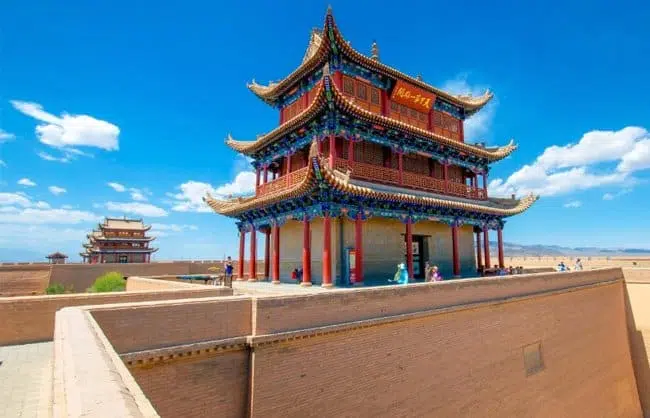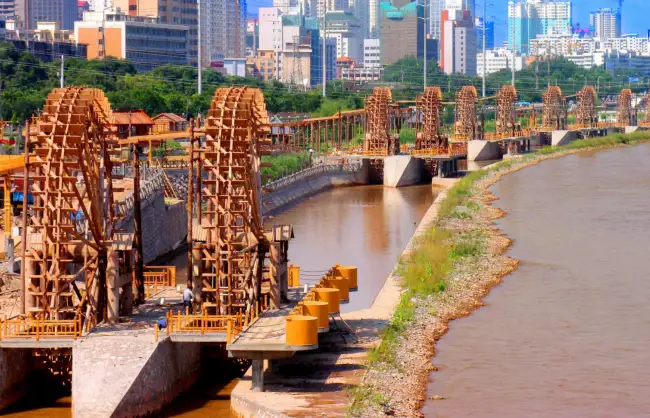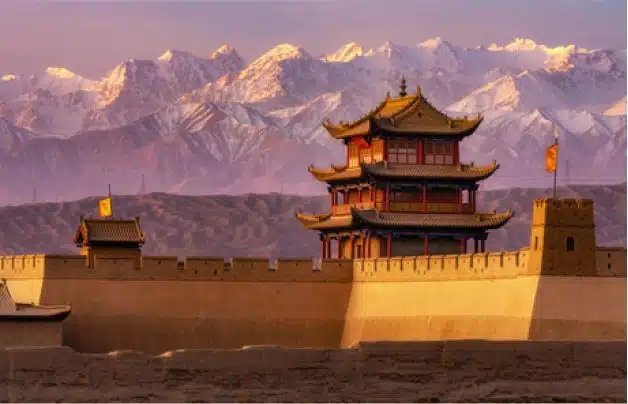Hexi Corridor on Ancient China Silk Road
Hexi Corridor
Located to the north of Qilian Mountain, south of Heli Mountain, west of Wushaoling Ridge, east of the border between Xinjiang and Gansu, the 1,000 kilometers long Hexi Corridor has been a place of abundance since ancient times. Speaking of the corridor, most people simply remember it as the must-pass route along the Silk Road. Actually, it was also the lifeblood of many dynasties’ military actions, economy and cultural exchanges for over 2,000 years. Now if you allow us several minutes, you will definitely be amazed at how great Hexi Corridor is. It is a kaleidoscope with splendid Buddhist art, wonderful historical sites and diverse landforms.
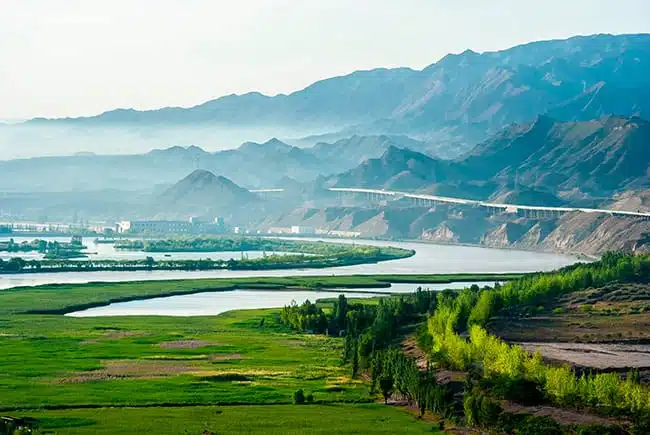
Have a Date with the Museums on the Silk Road
Gansu Provincial Museum | Go to admire the real Bronze Galloping Horse Treading on a Flying Swallow
Gansu Provincial Museum boasts a collection of more than 350,000 pieces of precious cultural relics, among which the most important and well-known ones are painted pottery, bamboo slips and documents of the Han Dynasty, treasures from the Han and Tang dynasties reflecting the ancient Silk Road, and the pick of Buddhist art. Visiting the museum is the easiest and yet inevitable way to understand the history of Hexi Corridor.
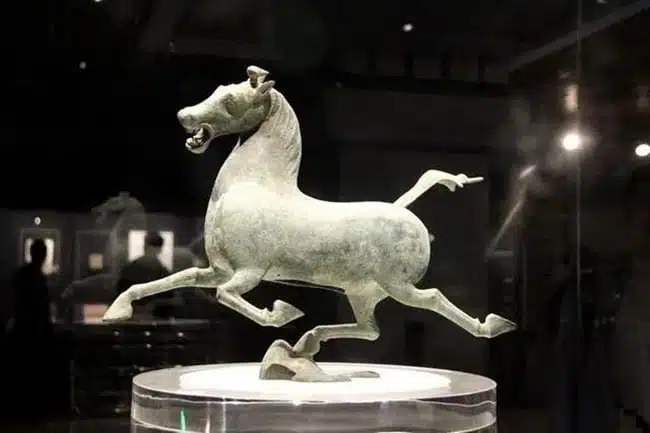
Wuwei Municipal Museum | Visit one of the earliest Chinese grottoes — Tiantishan Grottoes
Then why go to Wuwei Municipal Museum to see Tiantishan Grottoes? Tiantishan Grottoes, built in Beiliang during the Eastern Jin Dynasty, is one of the earliest grottoes in China. Tracing back to the source of the famous Yungang Grottoes and Longmen Grottoes always leads to Tiantishan Grottoes. It is known as the “Originator of Chinese grottoes”. In history, a large number of Buddha statues and murals in the grottoes were removed to construct a reservoir. Thankfully, the statues and murals were restored and kept in the Buddhist exhibition hall of the museum.
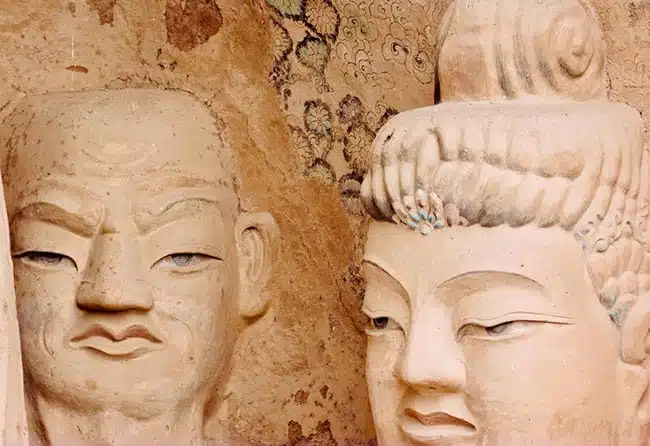
Wuwei Western Xia Dynasty Museum | Have a look at the only existing “dictionary” of the Western Xia Dynasty
As the auxiliary capital of the Western Xia Dynasty (established by Dangxiang nationality, one of the ancient northern minorities), there are many remains of the Western Xia Dynasty unearthed in Wuwei. Among them, the only surviving stone tablet with the characters of both Dangxiang people and Han people provides the most important materials for studying the Western Xia Dynasty. The museum is a must-see place for us to understand the mysterious dynasty.
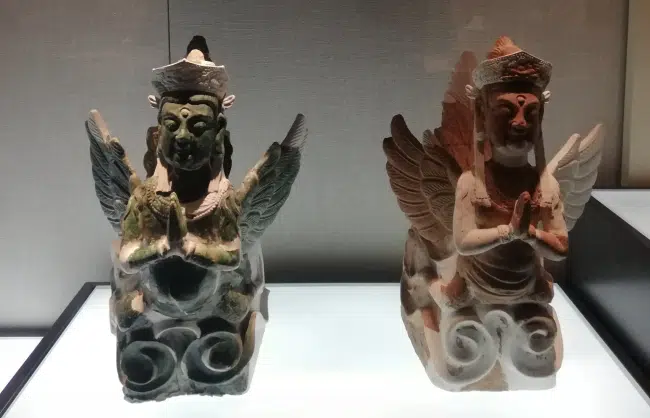
Feel the Power of Faith
Dunhuang Mogao Grottoes | Tick off a holy land of art that one must visit once in a lifetime
If you only have time to visit one grottoes site on your Silk Road tour, you must go to Mogao Grottoes. In 1987, it was selected as a World Cultural Heritage Site. Its southern area alone houses more than 2,000 painted sculptures, 45,000 square meters of murals, and 5 wooden cave eaves, showing us the Buddhist art that has lasted for thousands of years.
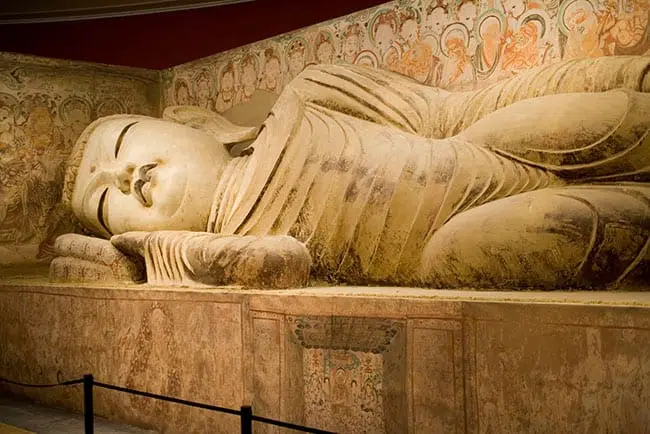
Yulin Grottoes | Visit sister of Mogao Grottoes
Yulin Grottoes, so to speak, made the glorious Dunhuang art together with Mogao Grottoes. Yulin Grottoes also has its own unique styles. Its murals reflecting Han Buddhism in the caves chiseled in the Tang, Western Xia, and Yuan dynasties as well as those showing Esoteric Buddhism (a sect of Tibetan Buddhism) help fill the missing ones in Mogao Grottoes.
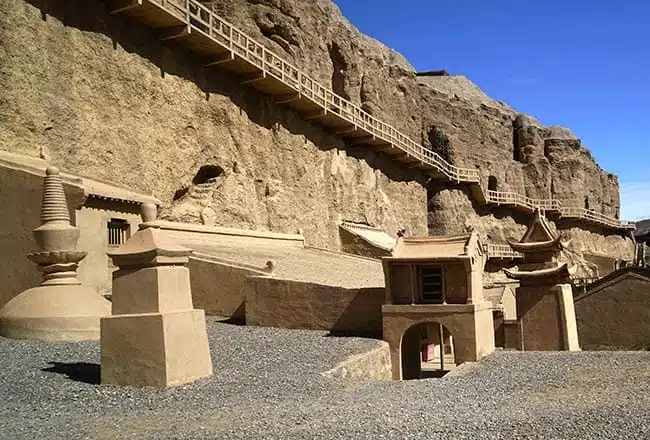
Zhangye Giant Buddha Temple | Pay respects to the largest reclining Buddha in the country
The Giant Buddha Temple is the only surviving temple built during the Western Xia Dynasty. It is famous for the largest indoor wooden reclining Buddha in China, 34.5 meters long and 7.5 meters wide across the shoulder.
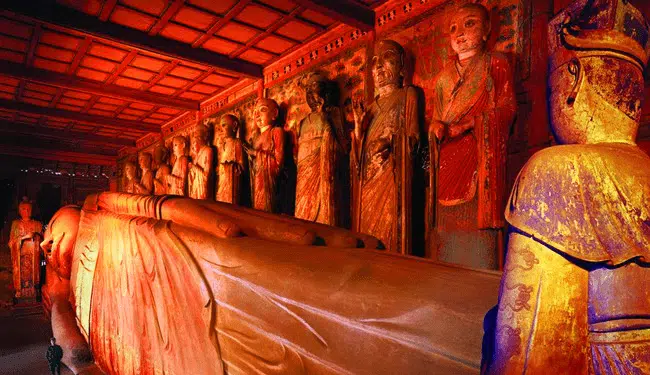
Step Back in Time at the Historical Sites
Suo Yang City | Have a glimpse of a complete military town of the Tang Dynasty
Suo Yang City, initially built in the Han Dynasty, prospered in the Tang Dynasty. It is a typical Tang Dynasty style ancient city. It has the best preserved ancient military defense system and farmland irrigation system in China.

Jiayuguan Pass | Stand at the end of the Ming Dynasty Great Wall
Jiayuguan Pass, dubbed “No. 1 Strategic Pass in the World”, was capable of both attacking and defense. It formed a rigorous military defense system with the nearby Great Wall, trenches, beacon towers, and other facilities. Visitors can climb upstairs to look far into the desert in the west.
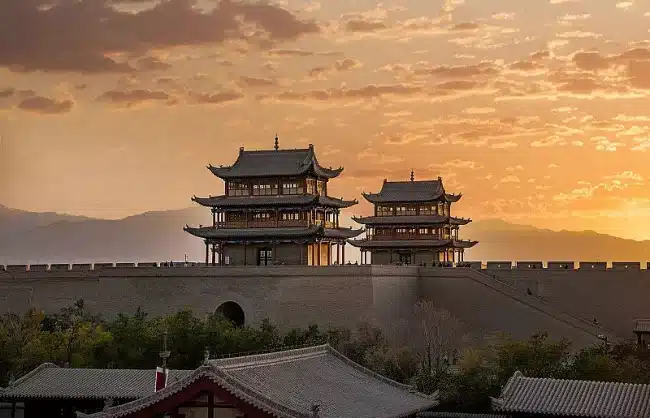
Marvel at the Various Magical Landforms
Zhangye Danxia Landform | Cannot believe such surreal thing really exists
Zhangye Danxia Landform Geological Park is so colorful and majestic that it is called “China’s Rainbow Mountains”. Here you will be stunned by the creation of the nature.

Echoing-sand Mountain & Crescent Lake | Wonder how the sand and spring coexist
The best of Echoing-sand Mountain is that the sand can make different sounds when the wind blows. Crescent Lake, surrounded by Echoing-sand Mountain but not buried by the sand, is truly a miracle. They are like twins in the endless desert, inseparable from each other.
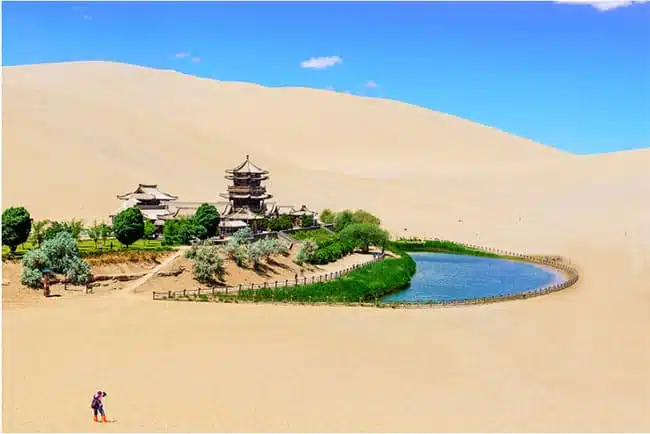
If you get excited by what Hexi Corridor has to offer, why don’t you have a Silk Road tour? There are so many things worth exploring, and we can be very helpful to you in planning a trip to Silk Route in China.


